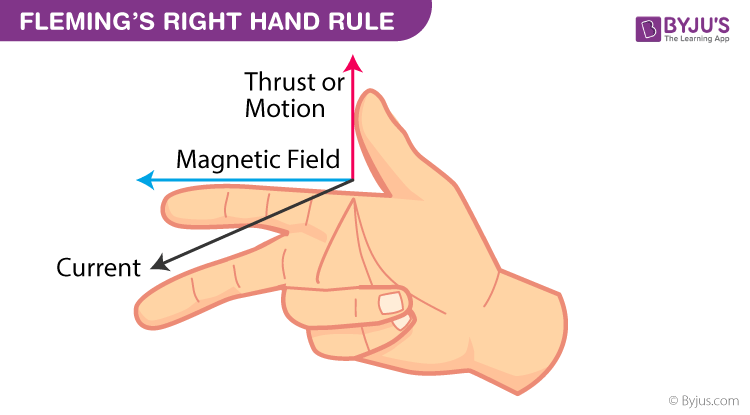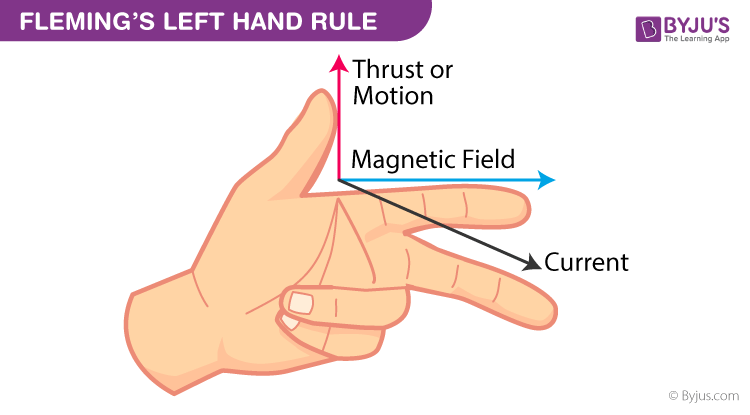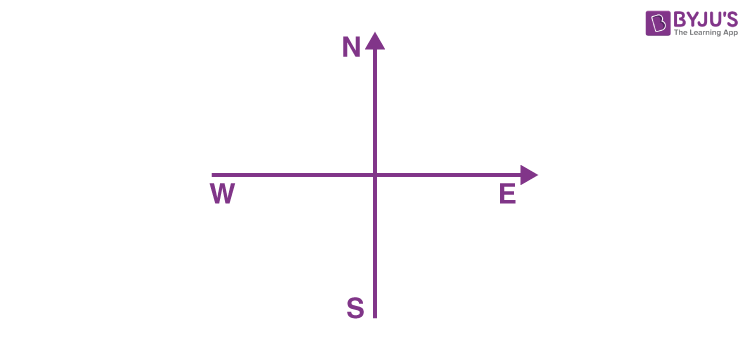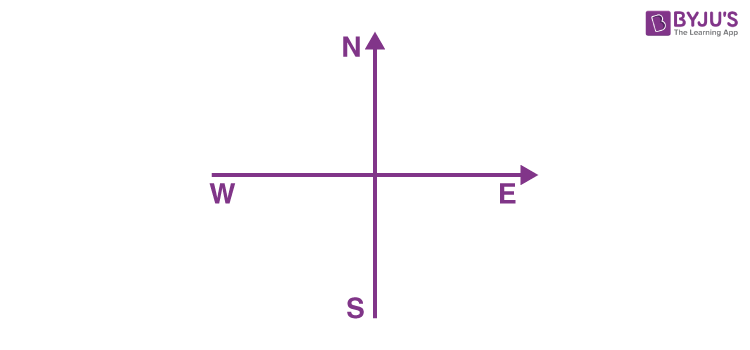Flemmings Right and Right Hand Rule
From: https://byjus.com/physics/flemings-left-hand-rule-and-right-hand-rule/
Fleming’s Left-Hand Rule and Fleming’s
Right-Hand Rule
Fleming’s Left-Hand Rule and Fleming’s Right-Hand Rule are essential rules
applicable in magnetism and electromagnetism. John Ambrose Fleming developed
them in the late 19th century as a simple way of working out the direction of
electric current in an electric generator or the direction of motion in an
electric motor. It is important to note that these rules do not determine the
magnitude; instead show only the direction of the three parameters (magnetic
field, current, force) when the direction of the other two parameters is known.
What Is Fleming’s Right-Hand Rule?
According to Faraday’s Law of Electromagnetic Induction, when a conductor
moves through a magnetic field, an electric current is induced in it.
Fleming’s right-hand rule is used to determine the direction of the
induced current.
 Fleming's Right-Hand Rule
Fleming’s Right Hand Rule states that if we arrange our thumb, forefinger
and middle finger of the right-hand perpendicular to each other, then the
thumb points towards the direction of the motion of the conductor relative
to the magnetic field, the forefinger points towards the direction of the
magnetic field and the middle finger points towards the direction of the
induced current.
Fleming's Right-Hand Rule
Fleming’s Right Hand Rule states that if we arrange our thumb, forefinger
and middle finger of the right-hand perpendicular to each other, then the
thumb points towards the direction of the motion of the conductor relative
to the magnetic field, the forefinger points towards the direction of the
magnetic field and the middle finger points towards the direction of the
induced current.
What is Fleming’s Left-Hand Rule?
When a current-carrying conductor is placed in an external magnetic field,
the conductor experiences a force perpendicular to both the field and the
current flow’s direction. Fleming’s left-hand rule is used to find the
direction of the force acting on the current carrying conductor placed in a
magnetic field.
 Fleming's Left-Hand Rule
Fleming’s Left Hand Rule states that if we arrange our thumb, forefinger
and middle finger of the left-hand perpendicular to each other, then the thumb
points towards the direction of the force experienced by the conductor, the
forefinger points towards the direction of the magnetic field and the middle
finger points towards the direction of the electric current.
Fleming's Left-Hand Rule
Fleming’s Left Hand Rule states that if we arrange our thumb, forefinger
and middle finger of the left-hand perpendicular to each other, then the thumb
points towards the direction of the force experienced by the conductor, the
forefinger points towards the direction of the magnetic field and the middle
finger points towards the direction of the electric current.
Tips to remember Fleming’s Left Hand
& Right-Hand Rule
Difference Between Fleming’s Left-Hand
and Right-Hand Rule
| Fleming’s Left-Hand Rule
| Fleming’s Right-Hand Rule
|
| It is used for electric motors
| It is used for electric generators
|
| The purpose of this rule is used for finding the direction of the magnetic
force acting in an electric motor.
| The purpose of this rule is used for finding the direction of the induced
current in an electric generator.
|
| The middle finger represents the direction of the current
| The middle finger represents the direction of the induced current
|
We can observe that the left-hand rule is applicable to Motors and the right
-hand rule to Generators. Fleming’s left-hand rule and Fleming’s right
-hand rule are a pair of visual mnemonics (mnemonics are learning techniques
or memory aids, such as an abbreviation, rhyme or mental image that helps to
remember something). In practice, these rules are never used except as a
convenient trick to determine the direction of the resultant – either
current or thrust. What gives the magnitude of force along this direction
determined by these rules is the Lorentz’ Force.
In this episode of Class 10 One-Shot Series, we take up CBSE Class 10
Science Chapter 13 – Magnetic Effects of Electric Current. We help you
understand all concepts related to the Magnetic Field, Magnetic Field Due to
a Current-Carrying Conductor, Oersted’s experiment, Right-hand thumb rule,
Fleming’s left-hand rule, Faraday’s experiment, Fleming’s right-hand
rule, and Electromagnetic induction.
Fleming’s Left-Hand Rule Examples
Q1. Determine the direction of the force acting on the proton if the proton
moves towards the east by entering a uniform magnetic field in the downward
direction.
Using Fleming’s left-hand rule, we can determine the direction of force
acting on the proton.
 Fleming's Left-Hand Rule
It is given that the proton is moving towards the east, and therefore, the
motion of the current is towards the east. The direction of force is towards
the north as the magnetic field is acting downwards. Consequently, we can
say that the direction of the force acting is towards the north.
Q2. Find the direction of the magnetic field if an electron is moving
vertically upwards and gets deflected towards the south due to a uniform
magnetic field.
Using Fleming’s left-hand rule, we can determine the direction of the
magnetic field acting on the electron.
Fleming's Left-Hand Rule
It is given that the proton is moving towards the east, and therefore, the
motion of the current is towards the east. The direction of force is towards
the north as the magnetic field is acting downwards. Consequently, we can
say that the direction of the force acting is towards the north.
Q2. Find the direction of the magnetic field if an electron is moving
vertically upwards and gets deflected towards the south due to a uniform
magnetic field.
Using Fleming’s left-hand rule, we can determine the direction of the
magnetic field acting on the electron.
 Fleming's Left-Hand Rule
We know that the charge on an electron is negative. When the electron moves
upward, the direction of the current is in the opposite direction; that is,
the direction of the current is downwards. It is given that the
force acting on the electron is in the south direction. Therefore, the
direction of the magnetic field is towards the east.
Fleming's Left-Hand Rule
We know that the charge on an electron is negative. When the electron moves
upward, the direction of the current is in the opposite direction; that is,
the direction of the current is downwards. It is given that the
force acting on the electron is in the south direction. Therefore, the
direction of the magnetic field is towards the east.
Frequently Asked Questions – FAQs
|
|
|
| Q1 |
State Fleming’s right hand rule.
Fleming’s Right Hand Rule states that if we arrange our thumb, forefinger
and middle finger of the right-hand perpendicular to each other, then the
thumb points towards the direction of the magnetic force, the forefinger
points towards the direction of the magnetic field and the middle finger
points towards the direction of the current.
|
| Q2 |
State Fleming’s left-hand rule.
Fleming’s Left Hand Rule states that if we arrange our thumb, forefinger
and middle finger of the left hand perpendicular to each other, then the
thumb points towards the direction of the magnetic force, the forefinger
points towards the direction of the magnetic field and the middle finger
points towards the direction of the current.
|
| Q3 |
Which rule is used in electric motors?
Fleming’s Left-Hand rule is used in electric motors.
|
| Q4 |
What is the purpose of Fleming’s right hand rule?
The purpose of Fleming’s right hand rule is to find the direction of
induced current when a conductor moves in a magnetic field.
|
| Q5 |
Which rule is used for electric generators?
Fleming’s right-hand rule is used for electric generators.
|
 Fleming's Right-Hand Rule
Fleming’s Right Hand Rule states that if we arrange our thumb, forefinger
and middle finger of the right-hand perpendicular to each other, then the
thumb points towards the direction of the motion of the conductor relative
to the magnetic field, the forefinger points towards the direction of the
magnetic field and the middle finger points towards the direction of the
induced current.
Fleming's Right-Hand Rule
Fleming’s Right Hand Rule states that if we arrange our thumb, forefinger
and middle finger of the right-hand perpendicular to each other, then the
thumb points towards the direction of the motion of the conductor relative
to the magnetic field, the forefinger points towards the direction of the
magnetic field and the middle finger points towards the direction of the
induced current.
 Fleming's Left-Hand Rule
Fleming’s Left Hand Rule states that if we arrange our thumb, forefinger
and middle finger of the left-hand perpendicular to each other, then the thumb
points towards the direction of the force experienced by the conductor, the
forefinger points towards the direction of the magnetic field and the middle
finger points towards the direction of the electric current.
Fleming's Left-Hand Rule
Fleming’s Left Hand Rule states that if we arrange our thumb, forefinger
and middle finger of the left-hand perpendicular to each other, then the thumb
points towards the direction of the force experienced by the conductor, the
forefinger points towards the direction of the magnetic field and the middle
finger points towards the direction of the electric current.
 Fleming's Left-Hand Rule
It is given that the proton is moving towards the east, and therefore, the
motion of the current is towards the east. The direction of force is towards
the north as the magnetic field is acting downwards. Consequently, we can
say that the direction of the force acting is towards the north.
Q2. Find the direction of the magnetic field if an electron is moving
vertically upwards and gets deflected towards the south due to a uniform
magnetic field.
Using Fleming’s left-hand rule, we can determine the direction of the
magnetic field acting on the electron.
Fleming's Left-Hand Rule
It is given that the proton is moving towards the east, and therefore, the
motion of the current is towards the east. The direction of force is towards
the north as the magnetic field is acting downwards. Consequently, we can
say that the direction of the force acting is towards the north.
Q2. Find the direction of the magnetic field if an electron is moving
vertically upwards and gets deflected towards the south due to a uniform
magnetic field.
Using Fleming’s left-hand rule, we can determine the direction of the
magnetic field acting on the electron.
 Fleming's Left-Hand Rule
We know that the charge on an electron is negative. When the electron moves
upward, the direction of the current is in the opposite direction; that is,
the direction of the current is downwards. It is given that the
force acting on the electron is in the south direction. Therefore, the
direction of the magnetic field is towards the east.
Fleming's Left-Hand Rule
We know that the charge on an electron is negative. When the electron moves
upward, the direction of the current is in the opposite direction; that is,
the direction of the current is downwards. It is given that the
force acting on the electron is in the south direction. Therefore, the
direction of the magnetic field is towards the east.